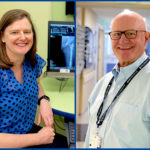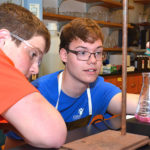Leg lengthening and hip surgeries inspire a career
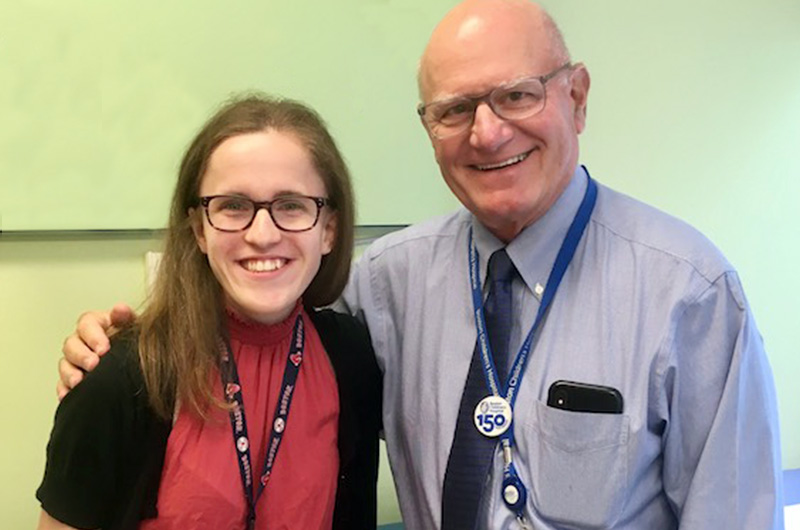
Lauren Schoeller was in eighth grade when she decided to become an orthopedic surgeon. She had by then had multiple surgeries, many of them scheduled around spring softball season. Now 20 and studying premed at the University of New Hampshire, Lauren has had a total of 18 operations on her leg, hips, foot, and spine. Orthopedic medicine has made it possible for her to walk, field balls, and run bases.
A rare condition, Conradi-Hunermann syndrome
Lauren was born with a rare genetic disorder called Conradi-Hunermann syndrome, a condition that interferes with the growth of the long bones in the arms and legs. While it ranges from mild to severe, Conradi-Hunermann syndrome can cause short stature and a variety of musculoskeletal issues, including leg length discrepancy.
When she was a toddler, Lauren’s left leg was noticeably shorter than her right. A shoe lift and leg brace made it possible for her to walk, but by the time she was 4, her parents, Beth and Carl, knew the problem would become more serious as she grew and developed.
Second opinion leads to leg lengthening
The first surgeon the family consulted advised amputating Lauren’s left leg. “Apparently he was quite adamant,” says Lauren. “They even gave my parents a tour of the amputation clinic.”
Beth and Carl brought Lauren to Boston Children’s Hospital looking for a second opinion. There they met Dr. James Kasser, who believed lengthening Lauren’s leg was a better idea, as long as the family was up for it.
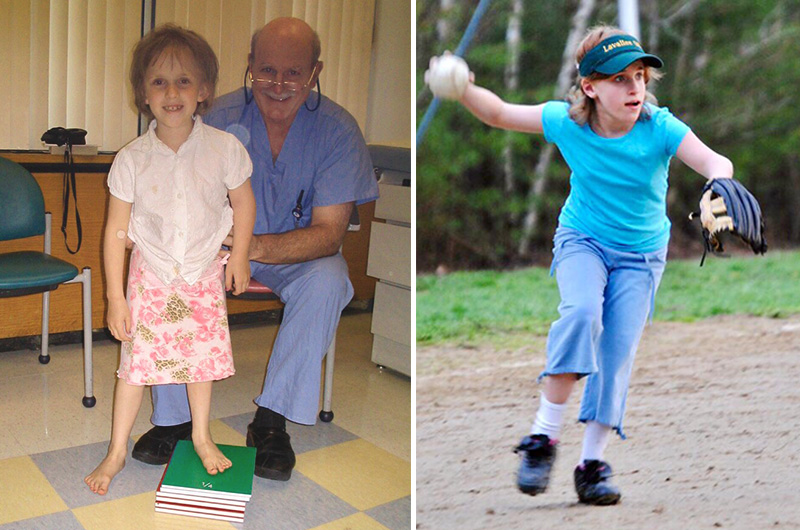
The process would take place in three stages, six or seven years apart. At the start of each stage, Dr. Kasser would cut through the bone to be lengthened and attach a fixator to Lauren’s leg that she would wear for up to nine months. Following a protocol provided by Dr. Kasser, Lauren’s parents would turn a mechanism on the device several times a day. This would slowly open a gap in the bone that Lauren’s natural healing response would fill with tissue. Over time, this tissue would convert to bone.
During each leg lengthening procedure, Lauren would have to use crutches until the newly formed bone grew strong enough to bear weight. The process would be long and demanding, but it would save her leg. The family decided to go ahead with it.
Lauren gains two inches
Lauren had the first leg lengthening procedure when she was 7. After five days in the hospital, Beth and Carl brought her home with detailed instructions from Dr. Kasser. In six months, Lauren’s left leg grew two inches. She still faced two more lengthening procedures: one when she was 14 and another when she was 20. But before then, she had time to get outdoors and get physical.
Lauren played softball through eighth grade. Given all she had been through, the sport held an important place in her life, one that Dr. Kasser seemed to appreciate. “He did everything he could to schedule my surgeries so that I would be ready to play the next season,” she says.

High school: A string of surgeries
Unfortunately, as her classmates were going through adolescent growth spurts, the effects of Conradi-Hunermann syndrome began to take a larger toll on Lauren. “By high school, there were so many things that needed to be addressed with my ankle, hips, and back. I had to give up playing softball, which was really hard for me.”
Throughout high school, Lauren had one surgery after another. Dr. Kasser performed three surgeries to realign her left foot and ankle. Dr. Yi-Meng Yen performed two arthroscopies to remove painful bone spurs from her hip. Despite ongoing cycles of pain, surgery, and recovery, Lauren joined her high school’s track and field team and learned how to throw a javelin.
College: Hip reconstruction and a new chapter
Lauren met Dr. Eduardo Novais in March 2018. By then, she was a first-year student at the University of New Hampshire and her left hip was so painful, she could barely sit through class. Nonetheless, hip reconstruction would be yet one more surgery, and a major one. Dr. Novais acknowledged both the positive and negative implications for Lauren at their first meeting.
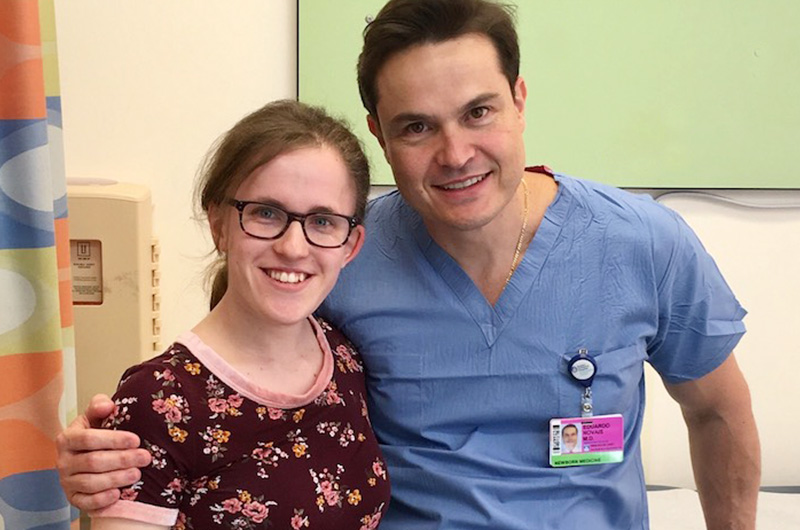
“Dr. Novais told me going through with this surgery would be like starting a new chapter in my life,” she says. His candid comment helped Lauren prepare for the procedure ahead. “Being in chronic pain was just so emotionally draining and exhausting. It was really validating to have a doctor realize that.” Lauren had reconstructive surgery on her left hip in June 2018. In the spring of 2019, she joined her school’s intramural softball league, returning to the game for the first time since eighth grade. “Being out on the field, I finally felt like myself again.”
Stage three: Looking ahead
New technology was available by the time Lauren had her third and final leg lengthening procedure. For the surgery this time, an internal rod replaced the clunky external fixator she’d worn during the first two stages. Lauren lengthens the device externally using a magnet. By the time the rod is removed this fall, her leg will be five-and-a-half inches longer than it would have been without the three procedures. Most importantly, her left leg will be the same length as her right.
With the long string of surgeries largely behind her, Lauren plans to play softball again next spring and may give bike riding a try.
Orthopedic surgeon in training
When asked what made her decide to study medicine, Lauren talks about her surgeons at Boston Children’s. “It really started with Dr. Kasser,” she says. “When the pain and problems with my health were constant, he was always there to support me and my parents. I decided I wanted to give back to my doctors who have given so much to me.”
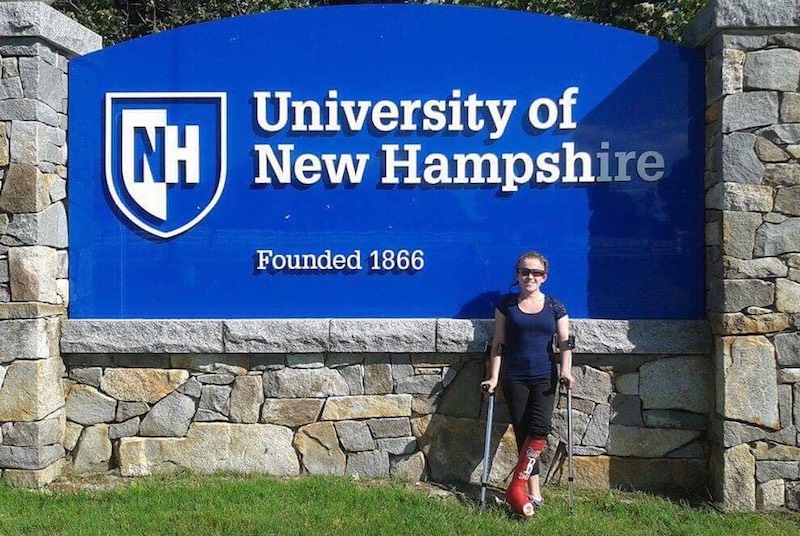
If Dr. Kasser inspired Lauren with his calm, supportive manner, Dr. Novais encouraged her with his enthusiasm. “I told Dr. Novais I wanted to be an orthopedic surgeon and from then on, he was always drawing diagrams and teaching me the anatomy of the hip. I thought that was the coolest thing.”
As a surgeon, Lauren will understand her patients’ fear and uncertainty. She’ll also be a living example of how surgery can change a person’s life. “If I didn’t have my leg lengthened, and if we’d left my hip the way it was, I would be in a wheelchair,” she says. “Dr. Kasser and Dr. Novais gave me a quality of life that I otherwise would not have had.”
Learn more about the Lower Extremity Program, Limb Lengthening and Reconstruction Program, and the Child and Young Adult Hip Preservation Program at Boston Children’s Hospital.
Related Posts :
-

Limb-lengthening surgery: A look at the pros and cons
Limb length discrepancies, a leg or arm that’s shorter than the other, can occur for a number of reasons. ...
-

One family, two very different clubfoot experiences
Theresah Boateng and her daughter Eno Agyapomaa Agyemang both have strong wills and outgoing personalities. Both were born with a ...
-

New hope for Caden's leg after accident
By the time he was 12, Caden had spent almost half his life struggling to keep up with his peers. When ...
-

George the unstoppable conquers leg-length discrepancy
George Davies, a senior at Bancroft School in Worcester, Massachusetts, faces every challenge, every obstacle and every situation with a ...


